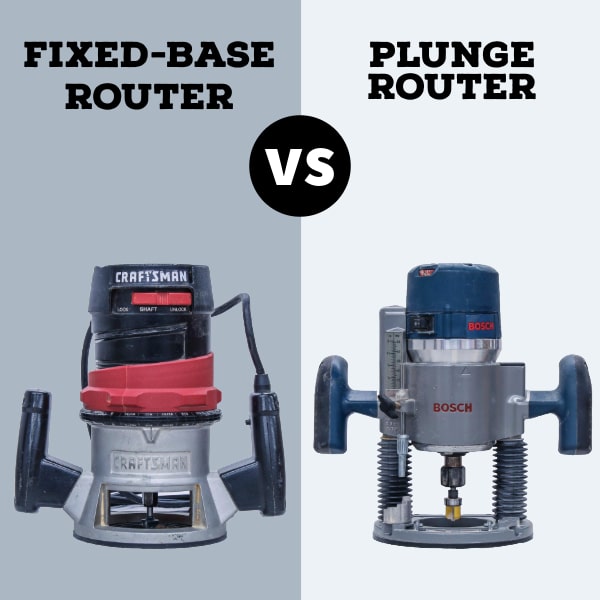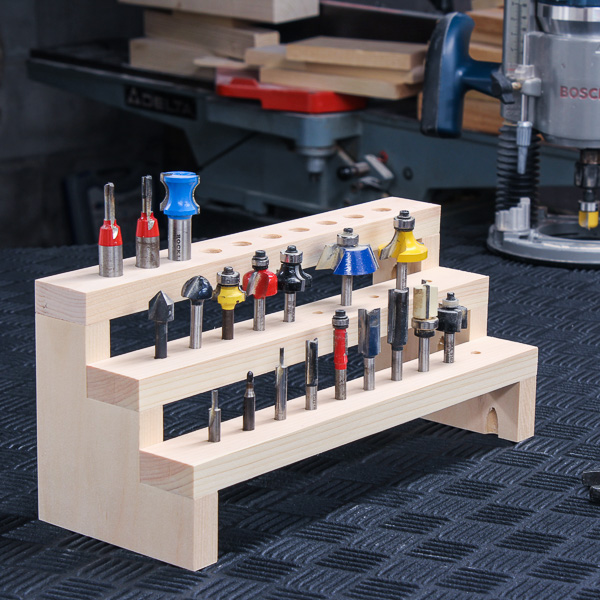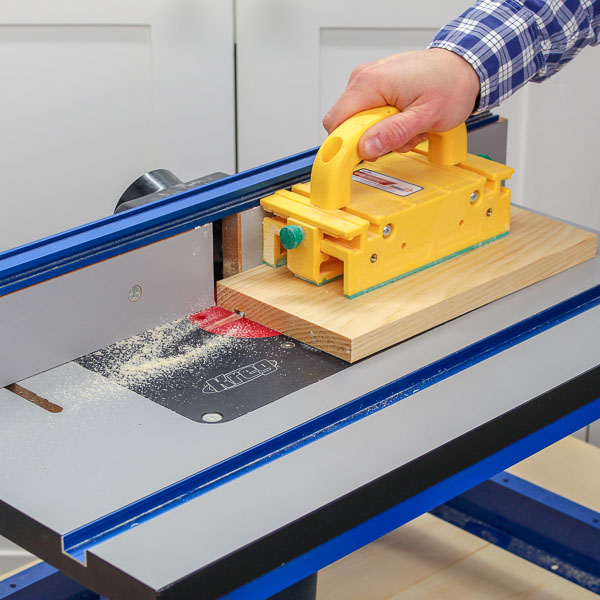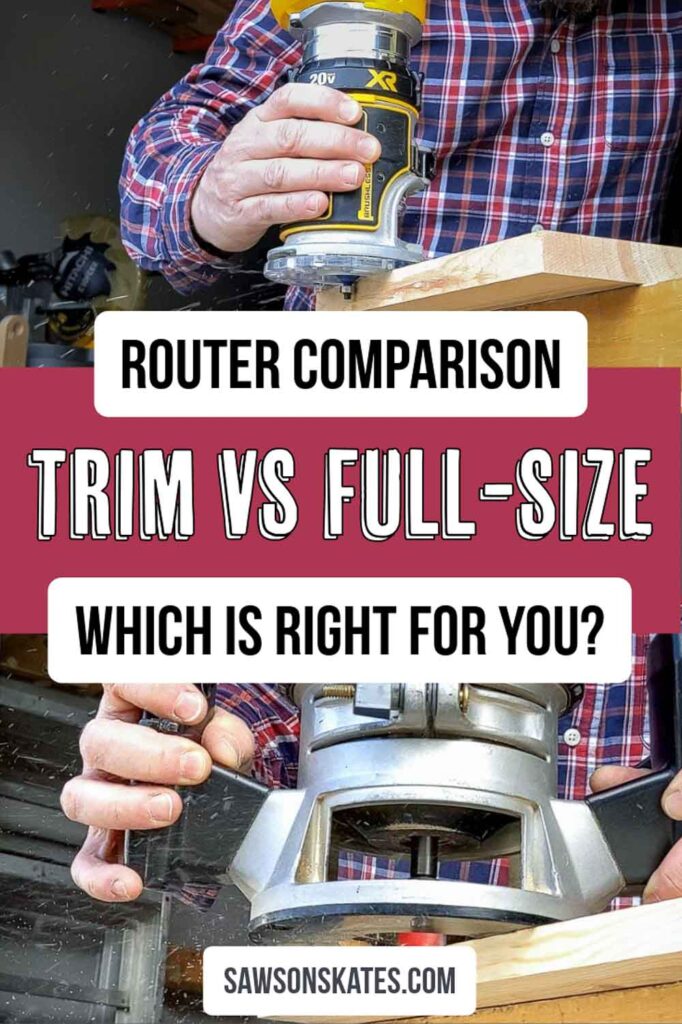Trim Router vs Full-Size Router (Which to Buy & Why)
Explore the differences between trim and full-size routers and discover the right tool for your woodworking needs.
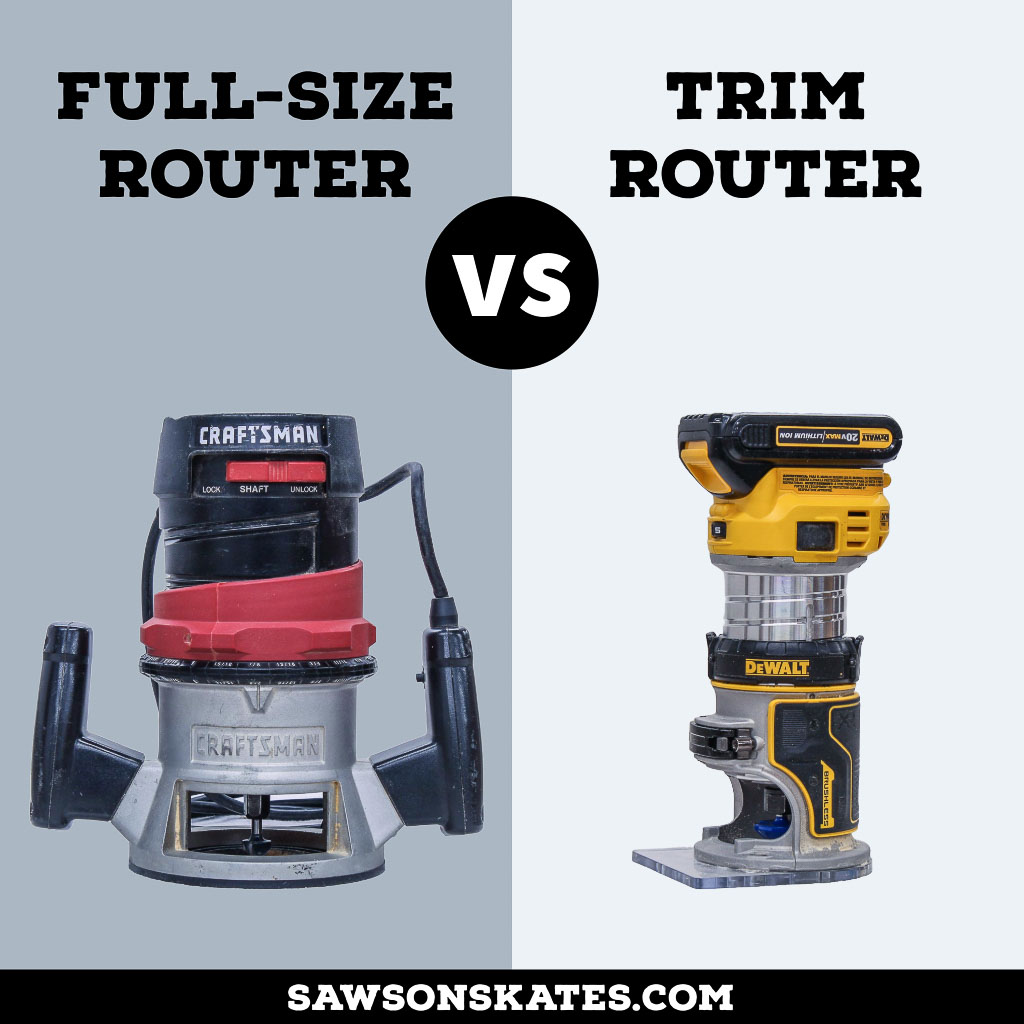
Are you feeling lost in a maze of router choices? Deciding between a trim and a full-size router can be confusing. In this article, I’m highlighting their similarities and revealing the advantages and drawbacks of each, helping you navigate this decision with confidence.
Table of Contents
- What is a Trim Router?
- What is a Full-Size Router?
- What’s the Difference Between a Trim Router and a Full-Size Router?
- Trim vs Full-Size Router Comparison Chart
- Should I Buy a Full-Size or Trim Router?
This article contains affiliate links. If you purchase from these links, I may earn a small commission at no additional cost to you. Visit my site policies for more information.
What is a Trim Router?
Trim routers, also known as laminate trimmers, are the compact cousins of the full-size router. While their smaller size might suggest limited functionality, these handy, lightweight tools pack a surprising punch, offering unique advantages for various woodworking tasks.
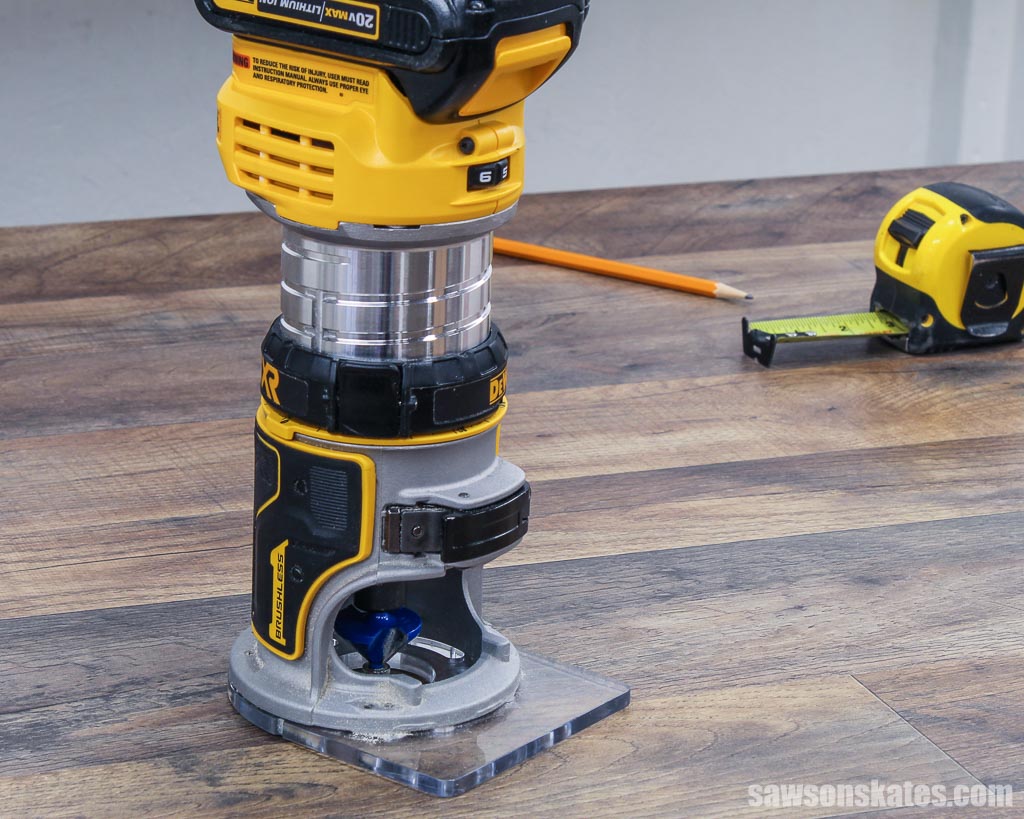
Here’s what sets a trim router apart:
- Size and Weight: Typically weighing up to 5 pounds, trim routers are significantly smaller and lighter than their full-size counterparts, which can weigh up to 15 pounds. Their compact size makes them ideal for one-handed operation, offering greater control and precision, which is especially beneficial for intricate work and tight spaces.
- Power: Despite their size, trim routers pack a punch, with horsepower ratings up to 1-¼ HP, ample for most woodworking tasks, such as edge trimming, rounding over edges, and creating small dados and inlays.
- Collet Size: Trim routers usually have smaller ¼-inch collets (the bit holder), which may limit the router bits you can use.
- Base Options: Many trim routers have fixed bases designed for flush trimming. However, you can equip some with optional plunge and edge guide bases for increased versatility.
Overall, a trim router is a valuable addition to any woodworker’s toolbox. Its small size, maneuverability, and power make it perfect for a range of tasks, especially those requiring precision and control in tight spaces. If you want a versatile, user-friendly tool for detailed work and light-duty joinery, a trim router is worth considering.
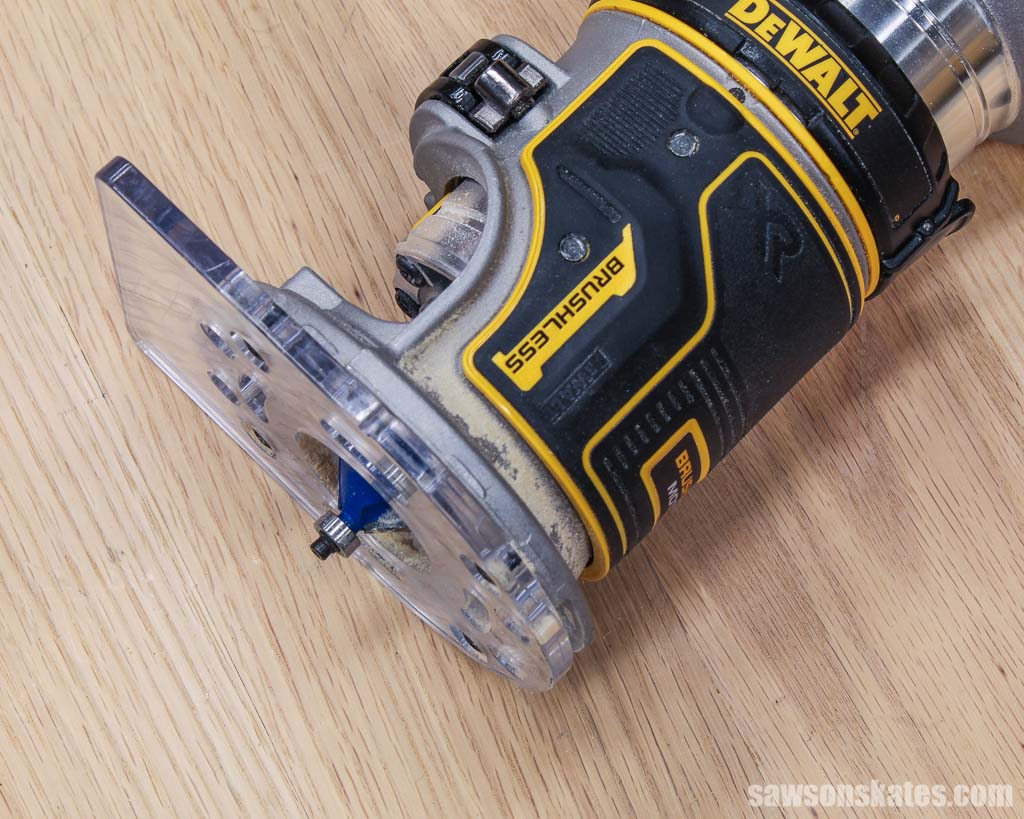
What are Trim Routers Used For?
Despite their compact size, trim routers offer an impressive range of capabilities in the woodshop. Here’s a closer look at some of their most common uses:
- Flush trimming: This is where trim routers shine. Their compact size allows them to easily get close to surfaces, trimming off overhanging material, such as laminate countertops and edge banding, creating a seamless, professional finish that’s difficult to achieve with other tools.
- Decorative profiles: You can equip trim routers with various profile bits to create decorative edges, such as roundovers, coves, and chamfers, adding visual interest to shelves, picture frames, and furniture.
- Routing shallow recesses for hardware like hinges is within the scope of a trim router’s capabilities.
- Creating inlays: Trim routers can be used to rout out precise grooves for inlays, adding a touch of elegance to furniture and other woodworking projects.
- Cutting small dados and joinery: While not ideal for heavy-duty joinery tasks, trim routers can handle smaller dados and rabbets for assembling boxes, shelves, and other woodworking projects.

Trim Routers: Pros and Cons to Consider
Trim routers offer distinct advantages for a range of woodworking tasks, but like any tool, they have their limitations. Here’s a breakdown of their strengths and weaknesses to help you decide if a laminate trimmer is the right fit for your needs:
Pros:
- Compact and Maneuverable: The small size of a trim router makes it ideal for intricate work in tight spaces.
- Lightweight: Weighing significantly less than full-size routers, reducing fatigue during extended use.
- Precision: Smaller size allows for greater control and accuracy.
- Versatility: Despite their size, they offer a wide range of capabilities, from edge trimming and decorative routing to light joinery tasks like creating small dados and rabbets.
- Affordability: Generally more budget-friendly than full-size routers, making them a good entry point for beginners or occasional users.
- Portable: Compact design lets you easily store it in your toolbox and transport it to any job site.
- User-friendly: Their compact size and simple operation often make them easier for beginners to handle and control.
Cons:
- Limited Power: Not the best choice for heavy-duty applications like raising door panels and flattening slabs.
- Collet Size: Restricts router bits to ¼” shanks, limiting bit options.
- Base Options: While some models offer interchangeable bases, trim routers typically have fewer base options than full-size ones, limiting how you can use them.
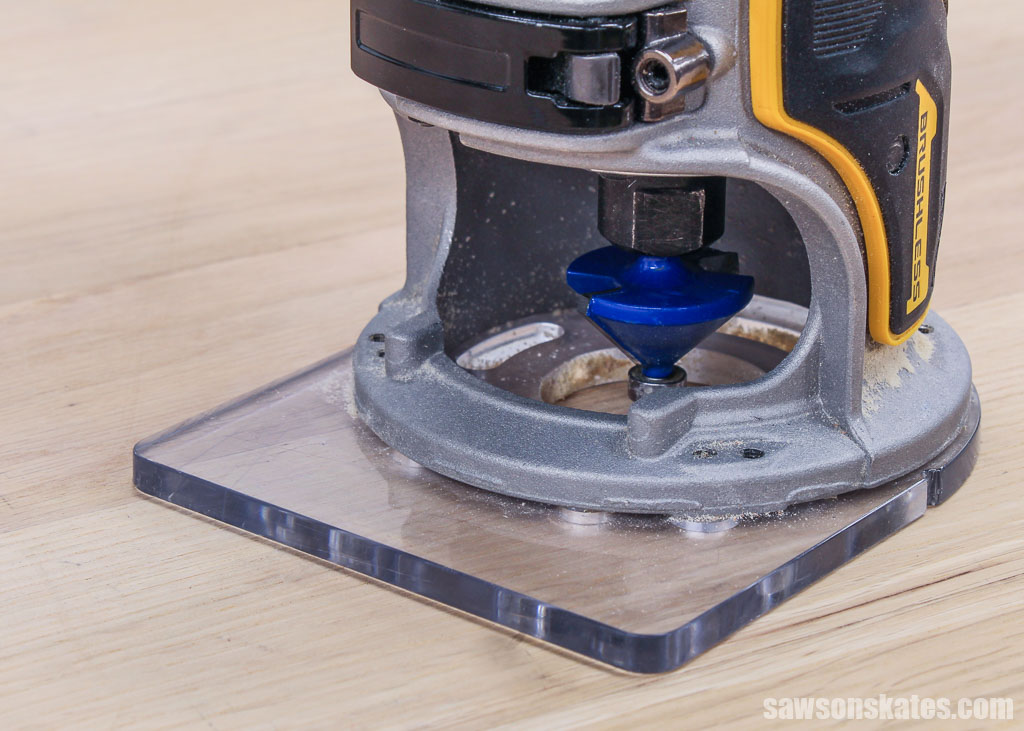
What is a Full-Size Router?
While trim routers reign supreme for delicate details and tight spaces, full-size routers are the workhorses of the routing world. They boast more powerful motors and accept bigger bits, making them ideal for tackling large projects and heavy-duty tasks.
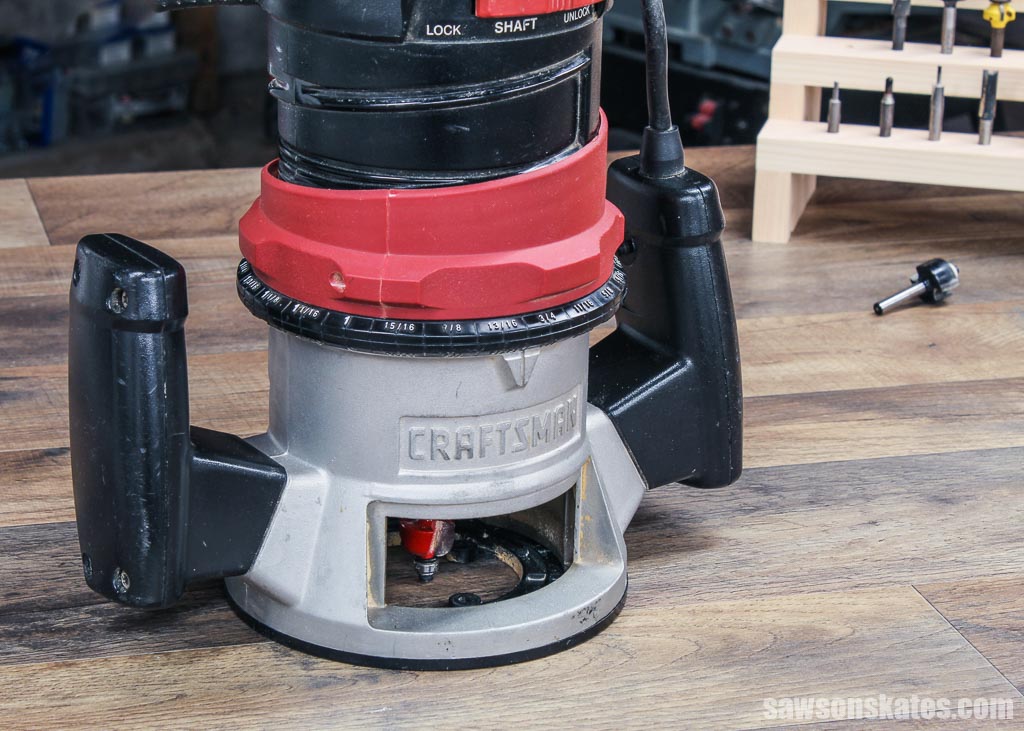
Here’s what sets a full-size router apart:
- Size and Weight: Full-size routers, weighing up to 15 pounds, are significantly larger than their trim counterparts, making them less maneuverable in tight spaces.
- Horsepower: Equipped with motors up to 3-¼ HP, full-size routers have the muscle to effortlessly handle deep cuts, large router bits, and demanding materials like hardwoods.
- Collet Size: Full-size routers typically use ½-inch collets (sometimes accepting ¼-inch, too), offering compatibility with a wider range of router bits.
- Stability: Their heavier weight and larger baseplate increase stability, especially for heavy-duty routing tasks.
- Baseplate Options: Full-size routers offer a wider selection of interchangeable bases, including fixed, plunge, edge guide, and the ability to mount them in a router table, expanding their functionality.
Overall, full-size routers are essential tools for professional woodworkers and serious hobbyists. Their power, versatility, and control make them invaluable for heavy-duty tasks, large projects, and intricate joinery. However, their bulk and price tag might not be suitable for everyone. A trim router could be a more practical and budget-friendly option if you primarily work with small projects or delicate tasks.
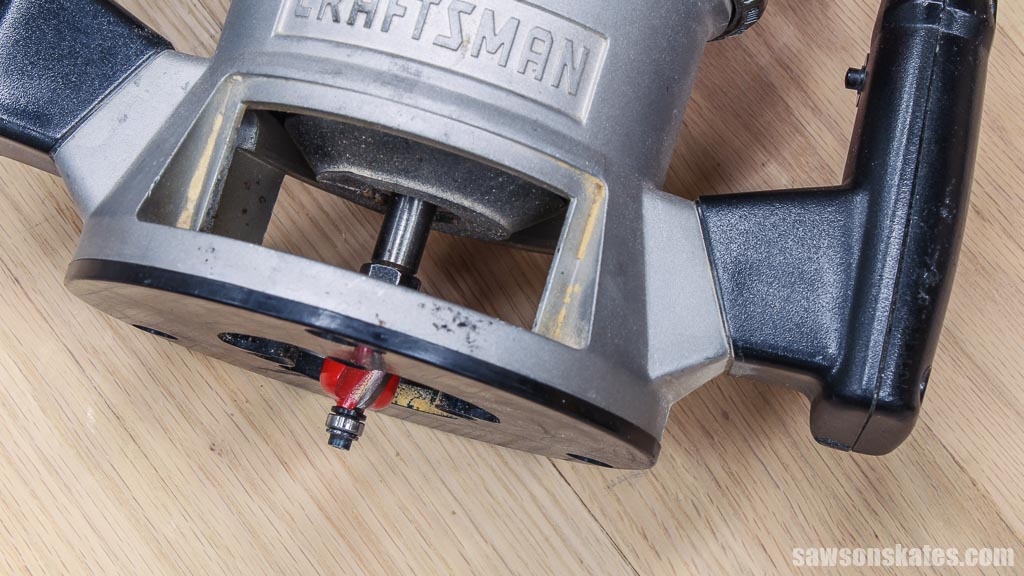
What are Full-Size Routers Used For?
While trim routers excel at details and tight spaces, full-size routers conquer heavy-duty tasks with unwavering power. Here’s a look at its most common uses:
- Traditional joinery: Cutting deep dados, rabbets, mortise and tenon joints are a breeze for a full-size router, even with tough materials like hardwoods.
- Panel raising and profiling: Unleash the potential of specialized bits like large raised panel cutters and wide trim bits for making cabinet doors and decorative moldings.
- Flattening slabs: Using a DIY or store-bought sled and a full-size router, you can quickly flatten large wood slabs, creating a smooth surface for charcuterie boards and tabletops.
- Table mounting: Many full-size routers can be mounted to a router table, transforming them into a stationary workstation for even greater precision and control.
NOTE: While you can use full-size routers to add details like roundovers, chamfers, and coves, I often reach for my trim router instead, easily navigating these tasks with impressive maneuverability and control.
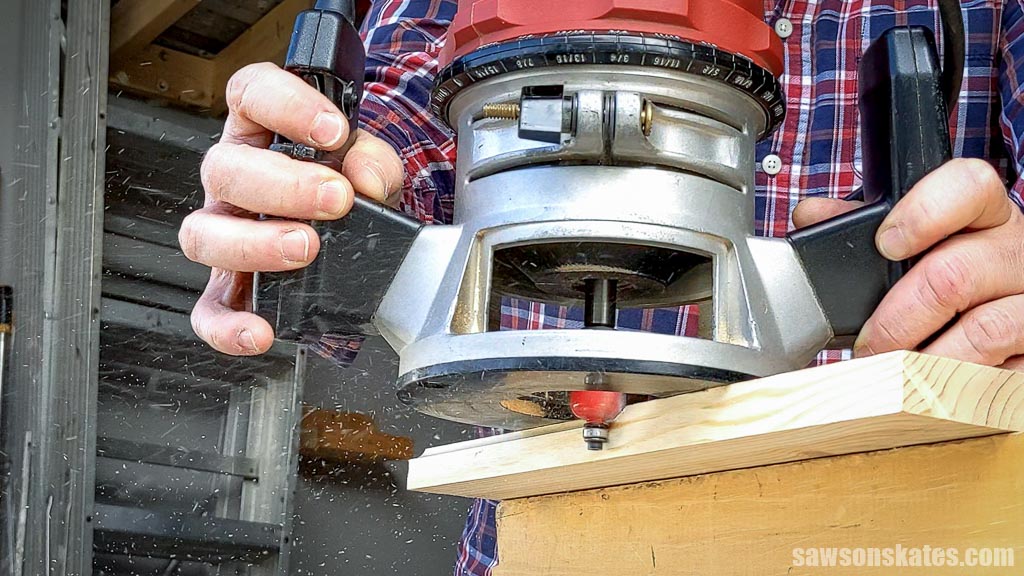
Full-Size Routers: Pros and Cons to Consider
A full-size router’s potent power and versatile capabilities make it tempting for any woodworker; however, deciding whether it’s right for you requires weighing its advantages and disadvantages:
Pros:
- Unmatched Power: Equipped with motors up to 3-¼ HP, full-size routers tackle anything from deep cuts in hardwoods to shaping thick stock with ease.
- Greater Versatility: ½” collets (some also accept ¼”), allowing you to use larger router bits.
- Stability and Control: The larger baseplate and weight provide enhanced stability.
- Baseplate Options: Interchangeable bases like fixed, plunge and edge guide bases expand functionality.
- Heavy-Duty Capability: Built for continuous use and handling tough materials like hardwoods, full-size routers are reliable workhorses for professional woodworkers and serious hobbyists.
Cons:
- Bulk and Weight: Their large size and heavier weight can be cumbersome to handle, especially for smaller projects, maneuvering in tight spaces, and beginners.
- Cost: The increased power and versatility come at a price, often making full-size routers more expensive than trim routers.
- Less Maneuverable: The bulkiness can limit maneuverability in confined spaces, making them less ideal for intricate details and close-quarter work.
- Overkill for Smaller Projects: Their power might be excessive for delicate work or small projects, making a trim router a more practical choice.
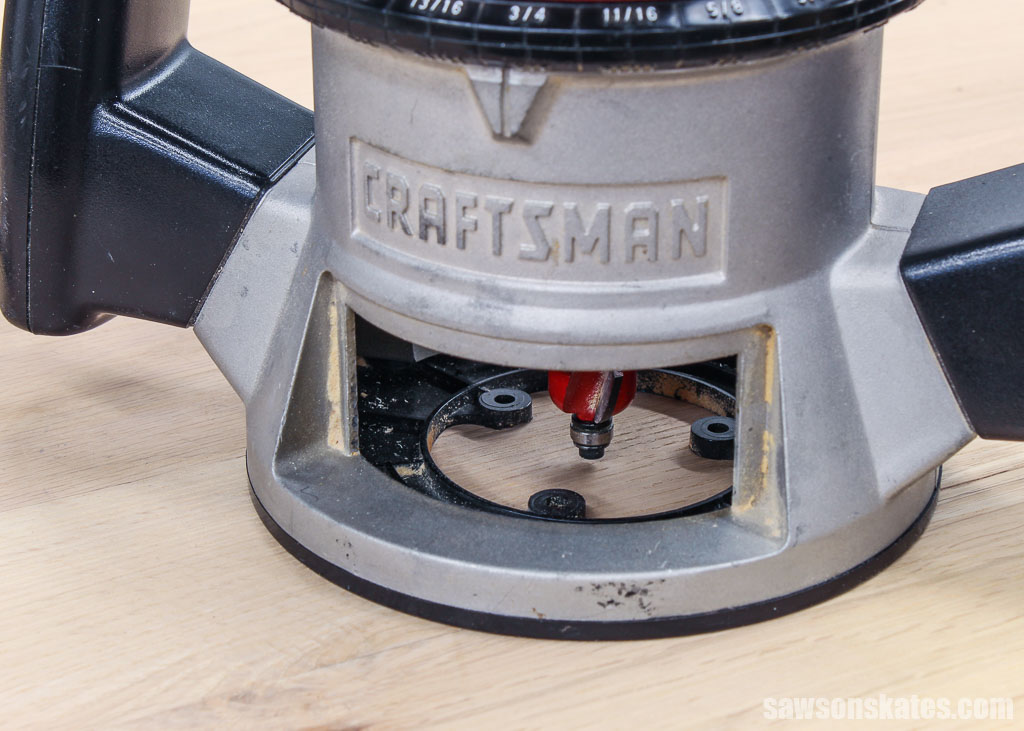
What’s the Difference Between a Trim Router and a Full-Size Router?
Choosing between a trim router and a full-size router can be tricky, as both have advantages and disadvantages. Here’s a breakdown of the key differences to help you decide which one best suits your needs:
Size and Weight:
- Trim Router: Compact and lightweight, typically weighing up to 5 pounds, making them ideal for maneuvering in tight spaces and handling delicate tasks.
- Full-Size Router: Bulky and heavier, typically weighing upwards of 15 pounds. They offer more stability and power but can be cumbersome to handle in confined spaces.
Power:
- Trim Router: Lower horsepower (up to 1-¼ HP), sufficient for most common tasks like edging and small joinery.
- Full-Size Router: Higher horsepower (up to 3-1¼ HP), handles deep cuts, large-diameter bits, and tough materials effortlessly.
Collet Size:
- Trim Router: Smaller ¼-inch collets, limiting bit shank diameter and project scope.
- Full-Size Router: Larger ½-inch collets (sometimes accepting ¼-inch), compatible with a wider range of router bits and projects.
Base Options:
- Trim Router: Often comes with a fixed base designed for tasks like flush trimming or edge profiling. Some brands may offer options like plunge and edge guide bases for increased versatility.
- Full-Size Router: Provides a wider selection of interchangeable bases like fixed, plunge, and edge guide bases, expanding their functionality and adapting to various tasks. Many also have the ability to mount in a router table.
Applications:
- Trim Router: Ideal for detailed work like edge trimming, rounding over edges, inlay work, and small joinery.
- Full-Size Router: Perfect for heavy-duty tasks like routing dadoes and rabbets, deep grooves, large profiles, raising panels, and flattening slabs.
Cost:
- Trim Router: Depending on the brand, a trim router is usually the more affordable option, making it ideal for beginners or occasional users.
- Full-Size Router: Usually a higher price tag due to its power and versatility.
Trim vs Full-Size Router Comparison Chart
| Trim Router | Full-size | |
| Size | Small & Lightweight | Large & Heavy |
| Power | up to 1-¼ HP | up to 3-¼ HP |
| Collet | ¼-inch | ½-inch or ¼-inch |
| Baseplate | Limited | More Options |
| Cost | More Affordable | More Expensive |
| Applications | Detailed Work, Tight Spaces | Large Projects, Heavy-Duty Tasks |
Should I Buy a Full-Size or Trim Router?
Choosing between a full-size and a trim router depends on your needs and woodworking goals. If you primarily work on smaller projects, require precision and control for detailed work, and are on a budget, a trim router could be the perfect fit. However, a full-size router might be a better choice if you tackle larger projects, need more power and versatility, or prioritize stability.
Here’s a quick look:
- Choose a trim router for:
- Detailed work in tight spaces
- Lightweight and maneuverable tool
- Smaller projects and light-duty tasks
- Budget-friendly option for beginners
- Choose a full-size router for:
- Heavy-duty tasks and large projects
- Deep cuts, large-diameter bits, and tough materials
- Wider range of projects and bit compatibility
- More power, stability, and control
Still unsure? Here are some questions to ask yourself to help you decide:
What type of projects do you typically work on?
- Small, delicate projects: A trim router is perfect for edge trimming, rounding over edges, and inlay work. It’s compact and maneuverable, making it ideal for tight spaces.
- Large, heavy-duty projects: A full-size router is better for deep cuts, dadoes, rabbets, and routing large profiles. It has more power and stability for handling dense materials and complex tasks.
How much experience do you have with woodworking?
- Beginner or occasional user: If you’re new to woodworking or only use a router occasionally, a trim router is a good starting point. It’s more affordable and easier to handle.
- Experienced woodworker or frequent user: If you’re a seasoned woodworker or use a router regularly, a full-size router might be a better investment, giving you more power and versatility for tackling challenging projects.
What is your budget?
- Budget-conscious: Trim routers are generally less expensive than full-size routers.
- Willing to invest: If you’re serious about woodworking and plan to use the router regularly, a full-size router is a worthwhile investment.
Do you have space for a large tool?
- Limited workspace: A trim router’s compact size makes it ideal for smaller workshops.
- Plenty of space: A full-size router requires more space for storage and operation.
Which Router Do You Own?
Despite starting with a full-size router, my go-to tool is now my trim router (I use this one). As a 5’4″ woodworker with smaller hands, its lighter weight, compact size, and ease of use make it perfect for the tasks I tackle the most, such as adding coves, roundovers, and chamfers to the edges of boards.
Ultimately, the best choice depends on your woodworking goals. Consider your project needs, the size and weight, power, collet size, base options, and cost to determine which router will be the right choice for you. You can also visit your local hardware store to try out both router types and see which feels more comfortable in your hands.
Final Thoughts
Trim and full-size routers have advantages, so it’s important to consider your needs before deciding which router to purchase.
If you’re a beginner or work on smaller projects, a trim router might be the best choice due to its affordability, compact size, and versatility. However, a full-size router could be the better option if you handle larger projects and need more power and stability.
Interested in woodworking but need help figuring out where to start? Join the FREE Saws on Skates® Beginner Woodworking VIP list and gain instant access to top-notch tool comparisons, tool tutorials, and free woodworking plans. Join for FREE now!

